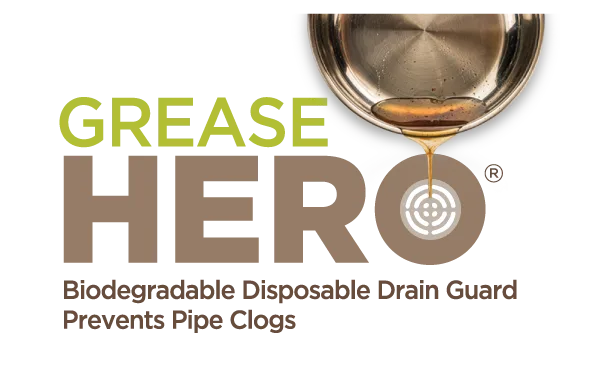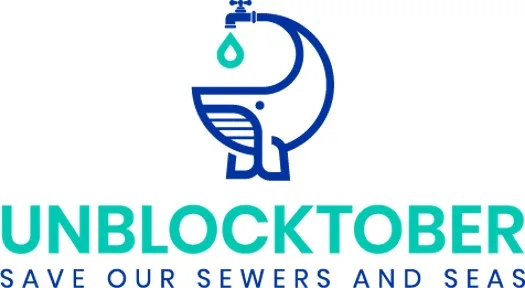Your cart is currently empty!
Tag: clean water
-

2021 The Year of Environmental Action
Let’s make 2021 the year of environmental action.
Having a positive impact on the environment doesn’t have to be time consuming or costly. Small actions in your everyday life can, and will, make a big difference on the health of our planet. If we can all commit to making small changes, we do have the ability to make a lasting positive impact for generations to come.
Below are a few ideas on how you can get started:
- Opt for Reusable Bags (both grocery and storage bags)
- Reuse and Recycle
- Use Reusable Beverage Cups
- Save Electricity
- Cut Down on Your Printing
- Conserve Water
- Carpool When Possible
- Plant Pollinator Friendly Plants
- Volunteer with a Wildlife or Environmental Organization
- Shop Virtually (bundle items together for fewer shipment and boxes)
- Compost to Reduce Food Waste
- Upcycle Items
- Shop Locally
- Purchase Recycled Paper Products (paper towels, tissues, toilet paper)
- Never Rinse Cooking Fats, Oils and Grease Down the Sink
As a company focused on helping the environment by encouraging people to properly dispose of cooking fats, oils and grease we want to take a moment to expand upon #15 on the list.
Environmental Action Starts at Home
Our Grease Hero drain guards were designed to help keep pollutants out of local environments and waterways. When cooking fats, oils and grease are rinsed down the kitchen sink drain they ultimately clog your home’s plumbing, contribute to fatbergs in city sewers and lead to dangerous sewer overflows.
Grease Hero is designed to be placed into the top of your kitchen sink drain, so you can quickly and easily pour used cooking fats, oils and grease into it and then promptly dispose of it. It’s designed with recyclable materials to absorb the oil and grease waste and can be thrown out with your regular garbage. See Grease Hero in action on our YouTube channel. This one easy change in your kitchen cleaning routine will save you money from costly plumbing repairs, the city from expensive sewer damage, and our environment from deadly contamination.
The real key to a more sustainable lifestyle is to turn your good intentions into good habits. Let’s work hard to make 2021 the year we all take environmental action in our lives.
____
Join our mission to save the environment. We aim to promote environmental, social and economic benefit, all while prioritizing the environment over our product life cycles… from the initial manufacture using recycled materials until final disposal.
Follow us on Instagram, Facebook, Twitter, LinkedIn and YouTube.
-
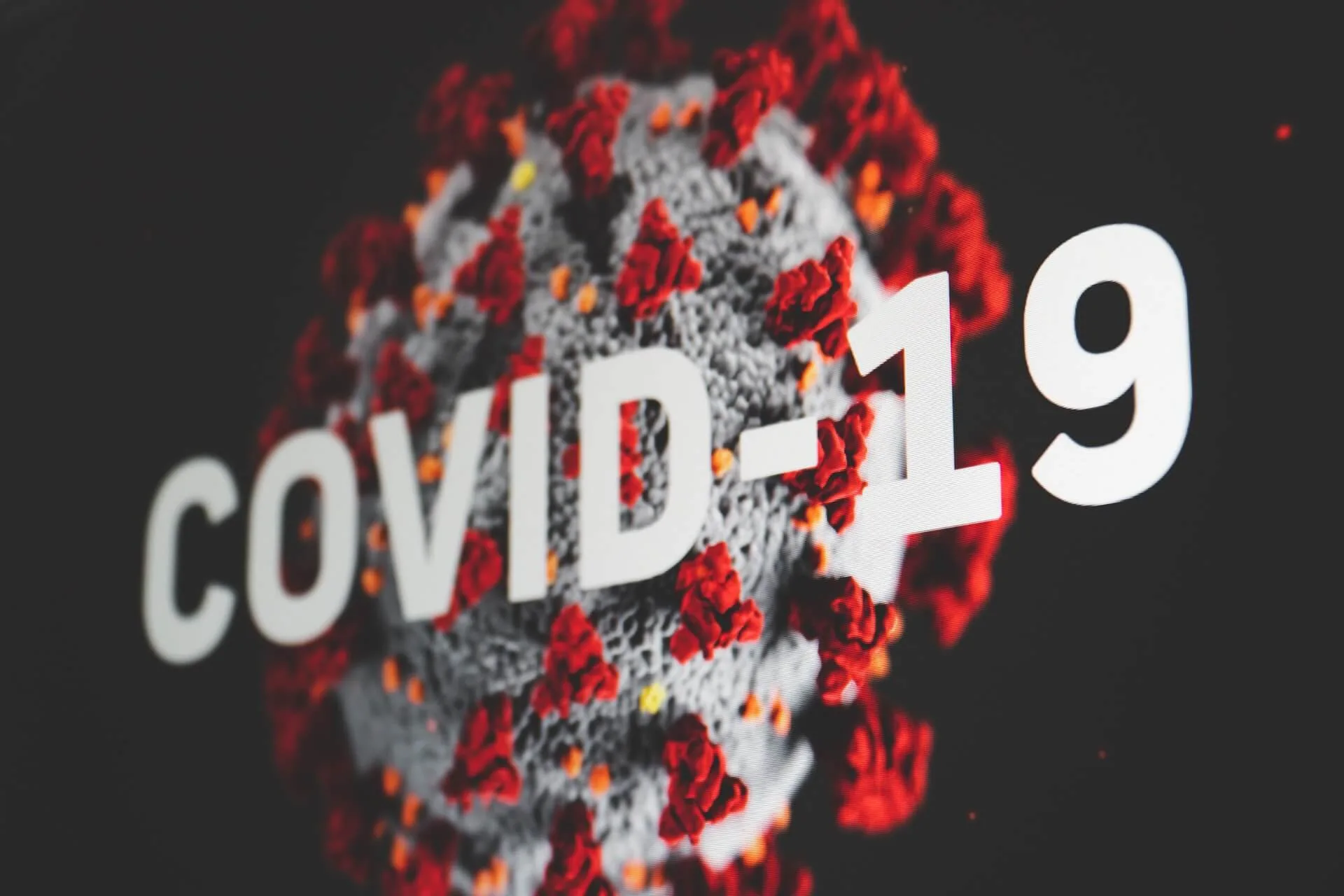
Unexpected Consequence of COVID-19, Sewer Overflows
COVID-19 has brought our global community to a standstill, and with this sudden pause in our daily routines, there has been an unexpected consequence—sewer overflows. A sewer overflow is when untreated sewage is discharged from a sewer into the environment prior to reaching sewage treatment facilities. Sewer overflows are dangerous for humans, animals and the local environment.
Increase in Sewer Overflows During COVID-19
There are two major reason we are seeing a dramatic increase in sewer overflows and fatbergs—the toilet paper shortage and an increase in cooking at home.
The Toilet Paper Shortage
The toilet paper shortage has forced many people to start flushing items that do not breakdown in city sewers. Water treatment operators are seeing an exponential increase in families flushing wet wipes, paper towels, newspaper and even shreds of clothing. None of these items breakdown and only end up clogging the sewer. The only item that is safe to flush is toilet paper, all other items should be disposed of in the trash.
Cooking at Home More
The second reason for the increase in fatbergs and sewer overflows is that more of us are cooking at home. With restaurants closed, we are cooking at home and not properly disposing of drain and sewer clogging substances (i.e. cooking oil, grease, fats, dairy, salad dressing). These cooking products and by-products combine in city sewers and bind non-biodegradable items to cause fatbergs, which then lead to sewer overflows into homes, neighborhoods and the environment.
Working Together for a Solution
To combat this sudden increase in environmental pollution from fatbergs and sewer overflows, we all need to work hard to do our part. By being mindful of what we rinse down the kitchen sink and flush down the toilet, we can help decrease the burden on our water treatment facilities and have a positive impact on our local environment.
Grease Hero
Grease Hero is a convenient and responsible way to dispose of cooking fats, oils and grease after cooking a meal. The Grease Hero drain guard is made of recycled materials and quickly absorbs the fats, oils and grease that you pour into it directly from your cooking pan. You then simply dispose of the entire drain guard into your trash. This keeps that harmful cooking oil and grease contaminants out of your plumbing, city sewers and the environment.
____
-

22 Tips for Creating an Eco-Friendly Home in 2020
Here at Grease Hero we are always interested in ways that we can live a more eco-friendly lifestyle. When Redfin reached out and asked us to participate in their piece, “Expert Tips for a More Eco-Friendly Home in 2020” we were absolutely thrilled. Below are the 22 expert tips that Redfin composed to offer ideas and suggestions on how you can live a more eco-friendly lifestyle in the new year.
From the Redfin blog:
A new year means a fresh start, a time for change. While this mindset typically applies to self-improvement, it’s equally as important for your home. As the New Year begins, this is the perfect opportunity to explore how you can implement a more eco-conscious approach in and around the house.
There are many different things you can do – some big, some small – to start making a difference. Some are minor lifestyle adjustments while others are long-term investments that will ultimately save both money and valuable resources. To help you get started, we asked experts on eco-friendly living for their best tips for creating a greener and healthier home.
1. Embrace green-certified cleaning products. A green-certified product requires environmentally preferred components that reduce toxicity that can linger in your air and on your surfaces. Green certified products are held to stringent green cleaning standards by third party organizations. If you’re considering a cleaning service for your home, be sure to ask if they use green-certified cleaning products.
– EnvirOx
2. Put your home on an energy reduction diet. Start by tracking your electricity use on a day-to-day basis with a smart energy monitor to discover how much energy your appliances and other devices consume. Use this information to eliminate energy hogs and shrink your home’s carbon footprint.
– Sense
3. Invest in a faucet filter for your kitchen and reusable bottles. By avoiding single-use plastic water bottles, an average family of four can reduce plastic pollution by 5,840 bottles a year. Also, the manufacturing of reusable items uses less water and produces less CO2. To make a disposable 16oz water bottle, it requires 32oz of water, and with each ton of product produced, it generates 3 tons of CO2.
4. Be very selective choosing materials and furnishings for your home. Green Haven Living suggests choosing decor and furniture made from reclaimed, upcycled, or sustainably sourced materials. To protect your indoor air quality, opt for water-based paints and finishes with low (or better yet, ZERO!) VOC’s. Eco Collective adds, when choosing home goods and kitchen tools, choose natural and nontoxic materials like cotton, glass and stainless steel for a longer-lasting and more eco-friendly style.
5. Eliminate as many single-use items as possible. A great way to determine what to tackle first is to open up your landfill (trash) and recycle bins and look inside; then get creative about how to stop using those single-use items or swap them out with reusable alternatives. If you have a zero-waste store or refill station shop nearby, stop in to see what household cleaners, personal care products, and food items you can refill, and they might offer workshops to further support your journey.
6. Make sure your home is set up with curbside recycling and composting services. If these services aren’t available in your neighborhood, find a local drop-off center, or contact your city council to help your community get curbside services.
7. Organize your home to make sustainability work for you. Don’t expect your family to use one recycling bin; have one in every room, including the bathroom and garage. Have a bin for reusable bags next to your outside door; keep a bin in your car and replenish it when you leave home. Have a designated “reuse” area (a bin or closet) for storing items that can have a second life in crafts, upcycling projects or repairing other items.
8. Insulate and ventilate your attic. Your attic is one of the most ignored areas of a home, yet it’s the area that has one of the biggest opportunities for creating a more eco-friendly environment. You can reduce your passive energy consumption immensely by properly insulating and ventilating your attic. We find that very often, if you seal and better insulate your attic and add an air extractor (we like solar ones), you can lower a home’s energy consumption by 30-50%.
9. Make use of already existing resources for your home. Everything Bags Inc. suggests looking for sustainable alternatives like chairs made from ocean waste, recycled glass for countertops, carpets made from recycled plastic, window frames made from recycled aluminum cans, and more. Integrated Design 360 recommends using reclaimed wood when building or remodeling a home. Not only will you use a renewable resource you will have a story to tell if the wood is documented.
10. Rethink your roof. It’s a platform for solar in sunny regions and in rainier, colder regions it can support greenery. You can reduce your CO2 footprint by switching to solar or creating a green roof that absorbs CO2.
– Earth911
11. Protect your skin from toxins. Our skin is our biggest organ and is incredibly absorptive so transitioning to organic towels, sheets, and clothing can make a big difference in the number of toxins you are exposed to each day.
12. Reduce the use of plastics. There are many simple ways to do this. For example, using glass for food storage is an easy, high impact swap that will also save you time and water (reheat in the same storage container and pop in the dishwasher when done; hooray for fewer dishes!). You can also opt for natural cellulose sponges instead of plastic ones or try using beeswax wraps instead of plastic wrap.
13. Use eco-friendly flooring. Utilize bamboo, cork, or FSC-certified oiled wood for as many flooring surfaces as possible.
14. Go electric! Natural gas contributes to climate change and indoor air pollution. Not only are electric appliances better for your health, but they’re also better for our climate. So if you’re upgrading any of your appliances this year, look for electric appliances instead of natural gas. Induction cooktops are all the rage with celebrity chefs these days!
– Earthy B
15. Weatherizing Your Home. Consider weatherizing your home, or sealing the small leaks and holes in your home’s building envelope, in order to save energy and money and make your home more comfortable. If you add up all the leaks, holes and gaps, it would be the equivalent of having one window open every day of the year. You should start first with investigating your front door then move to your windows and you can seal these leaks with various materials such as caulk, rubber seals, weather-stripping, or foam rods.
– Cook County Department of Environment and Sustainability
16. Don’t forget about your septic tank. Use a green product such as Super SRV™ to treat your septic tank and break down sludge naturally. Doing so also eliminates odors and the need for periodic and costly pumping out of septic tanks.
– Eatoils
17. Cut down on your waste in the kitchen. Purchase unprocessed whole foods, prepare the food yourself, eat everything you can, and compost the rest. We recommend using real dishes and silverware or eco-friendly disposables made from bamboo or paper, rather than non-compostable plastic ware.
– Turn
18. Recycle correctly and know your community’s recycling rules and requirements. Every community has different rules and requirements when it comes to recycling. Millennium Recycling advises keeping your city’s “yes and no” list on your fridge or near your bin as a simple reminder. The Association of Plastic Recyclers reminds us that Items that can’t go in your curbside bin, like plastic bags & wrap, can often be recycled through separate programs. There are plenty of resources and tools on recycling best practices, do’s and don’ts, and tips on what is and isn’t recyclable, such as Recycle Across America’s free toolkit or Recycle Coach, which offers a search engine that tells you what goes where. By being better informed, you can finally stop tossing items in recycling hoping they’re recyclable. However, when in doubt, keep it out.
19. Properly dispose of used cooking fats, oils, and grease. This is a simple step you can take towards creating a green home and living a more sustainable lifestyle. Pouring cooking oil and grease down the kitchen sink leads to clogged pipes in your home and sewer overflows in your neighborhood, which damage the environment and pollute local waterways.
20. Switch to LED lighting in your home. ENERGY STAR-qualified LED bulbs can last about 25,000 hours or more, 25 times longer than incandescent light bulbs and 2.5 times longer than compact fluorescent light (CFL) bulbs. You can save more than $65-$100 per year in energy costs just by replacing the bulbs in your home’s five most frequently used light fixtures, while also reducing your carbon footprint.
– District of Columbia Sustainable Energy Utility
21. Start small. Buy eco-friendly items that you use often, such as cleaners and detergents. For example, once you run out of your old floor cleaner, purchase an eco-friendly cleaner to replace it. This way, switching to a more eco-friendly lifestyle is less overwhelming and won’t break the bank in the process.
22. Wet mop or vacuum often. Toxic chemicals can attach to dust particles and settle on the floor. Infants and toddlers children who spend a lot of time on the floor are the most exposed to these chemicals. Use a HEPA vacuum cleaner if available.
– Center for Environmental Health
____
Join Our Mission to save the environment and properly dispose of Fats, Oils, and Grease.
-
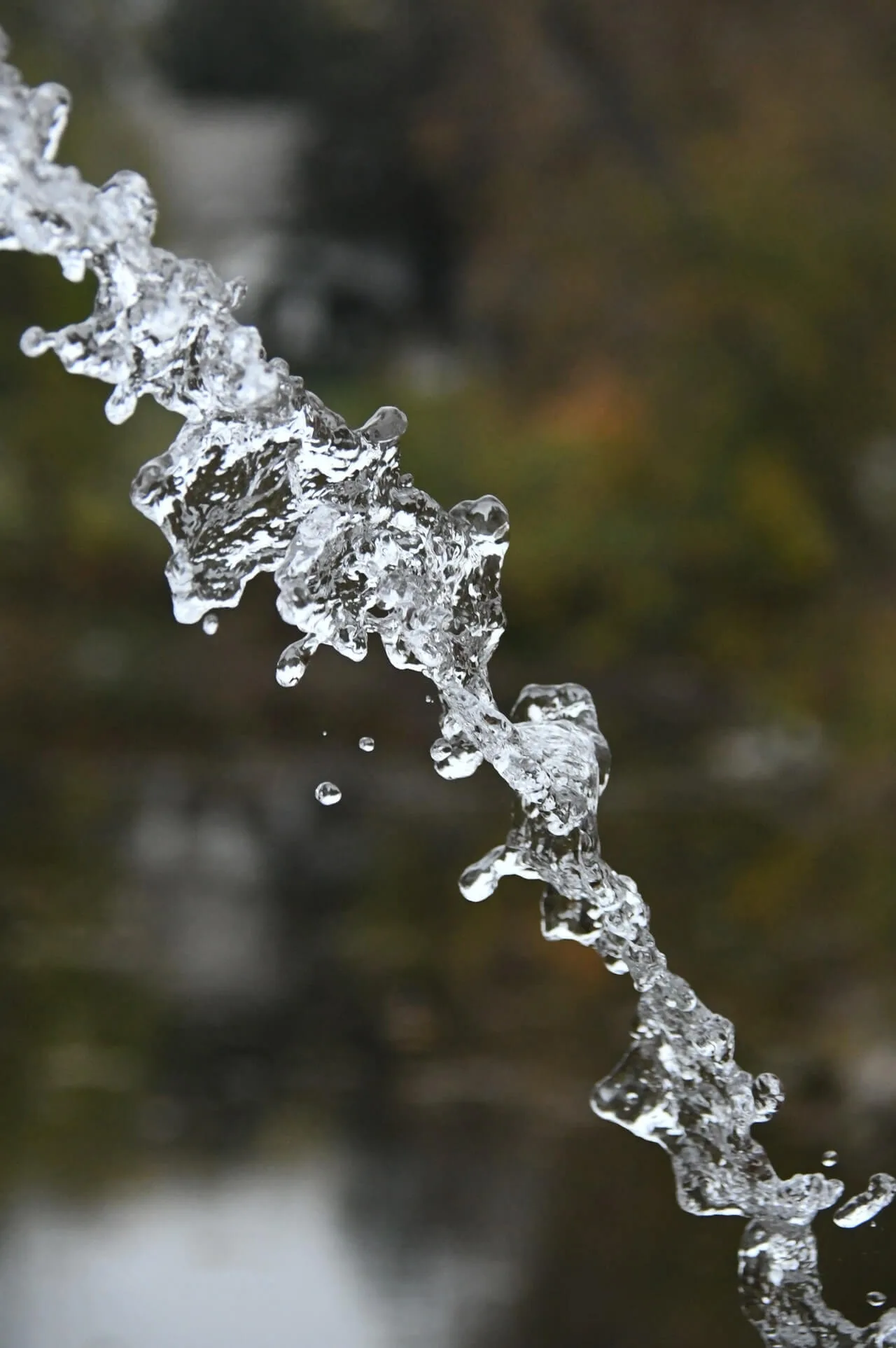
How Cooking Fats, Oils and Grease Damage the Environment
As fatbergs continue to make headlines, it’s clear that many people do not know how damaging cooking fats, oils and grease are to the environment. These cooking leftovers can wreak havoc on local eco-systems when they spill into the environment through sewer overflows. Before you rinse that pan of bacon grease down the kitchen sink drain here are three things to consider.
Life-Threatening Illnesses
From the EPA: Raw sewage contains disease-causing pathogens, including viruses, bacteria, worms, and protozoa. Diseases resulting from enteric pathogens range from stomach flu and upper respiratory infections to potentially life-threatening illnesses such as cholera, dysentery, Hepatitis B, and cryptosporidiosis.
When sewer overflows contaminate public places and waters, people can be put at risk of exposure to the untreated sewage when: Drinking from a contaminated community water supply, eating contaminated fish or shellfish and swimming in contaminated open water.
Damaging Long-Term Effects
The EPA states that: Animal fats and vegetable oils are regulated under 40 CFR 112, which has identical requirements for petroleum and non-petroleum oils. Petroleum oils, vegetable oils, and animal fats share common physical properties and produce similar environmental effects. Like petroleum oils, vegetable oils and animal fats and their constituents can:
- Cause devastating physical effects, such as coating animals and plants with oil and suffocating them by oxygen depletion;
- Be toxic and form toxic products;
- Destroy future and existing food supplies, breeding animals, and habitats;
- Produce rancid odors;
- Foul shorelines, clog water treatment plants, and catch fire when ignition sources are present; and
- Form products that linger in the environment for many years.
Toxic for Humans and Wildlife
Contaminants in the environment can look and smell pretty bad, but their impact goes beyond just aesthetics. Some pollutants resist breakdown and accumulate in the food chain. These pollutants can be consumed or absorbed by fish and wildlife, which in turn may be eaten by us. Chemicals can also get into sediments, impacting large coastal areas, threatening human health, and reducing the economic well-being of regions that depend on a healthy coastal environment (NOAA).
Now imagine a neighborhood full of people all rinsing a pan of grease down the sink, that grease coats the sewer restricting water flow, forms a fatberg and then sends sewage into the environment through an overflow. While cooking fats, oils and grease seem harmless enough when you are cooking, improper disposal of them can have lasting negative effects.
The Grease Hero
The Grease Hero is a convenient and hassle-free way of disposing of cooking fats, oils and grease after cooking a meal. The drain guard is made of recycled materials and quickly absorbs the fats, oils and grease that you pour into it directly from your cooking pan. You then simply dispose of the entire Grease Hero drain guard into your trash. This keeps that harmful cooking oil and grease contaminants out of your plumbing, city sewers and the environment.
____
Join Our Mission to save the environment and properly dispose of Fats, Oils, and Grease.
-
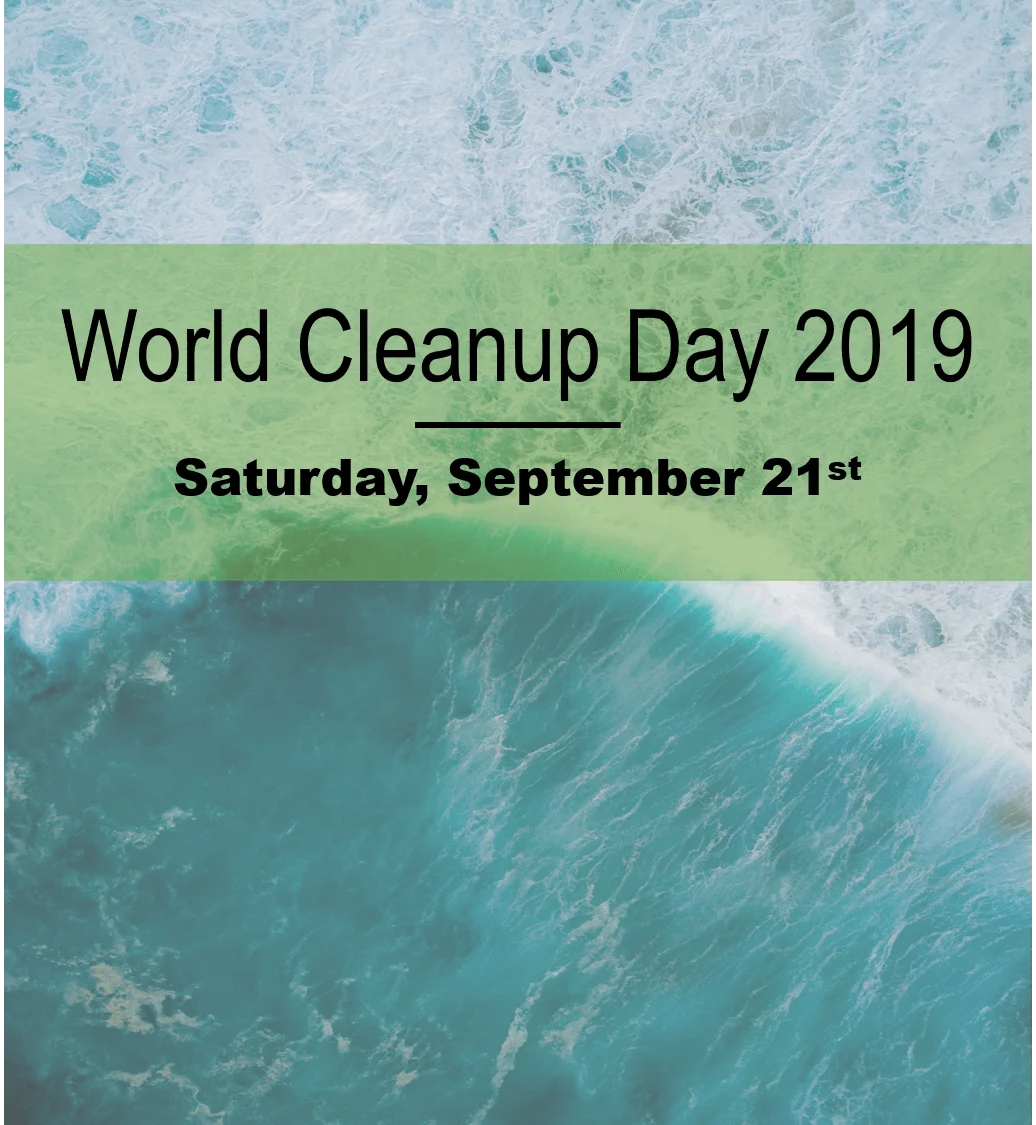
World Cleanup Day 2019—Saturday, September 21st
World Cleanup Day 2019 will be celebrated on Saturday, September 21st by over 18 million volunteers in 157 countries. “World Cleanup Day is one of the biggest civic movements of our time, uniting 157 countries across the world for a cleaner planet.” (World Cleanup Day) The goal to clean our planet crosses borders and defies cultural and religious differences. It is a day to come together to make a difference in the health of our planet Earth.
World Cleanup Day 2019—The Power of Everyday People
“We don’t need a handful of people doing zero waste perfectly. We need millions of people doing it imperfectly.” Anne Marie Bonneau, Zero Waste Chef.
This quote from Chef Anne Marie Bonneau rings true regarding World Cleanup Day 2019. While zero waste might be the ultimate goal for your family, it is not achievable for many; however trying your best to make a difference and reduce waste in your own way is exactly what the world needs.
For every pan of grease you don’t rinse down the kitchen sink, for every plastic bag you don’t use from the grocery store, for every piece of trash you pick up on your walk—you are making a difference, you are working towards change. World Cleanup Day is rooted in change—changing the way we come together to accomplish a single global goal.
The world changing idea of World Cleanup Day began in the small northern European country of Estonia in 2008. “50,000 people united to clean up the entire country in just five hours. On that day, a global bottom-up civic movement was born and spread like wildfire around the globe. This captured the imaginations of people worldwide, who were inspired to follow suit with the same ambitious ‘one country, one-day’ formula.” (World Cleanup Day)
Making a Difference Starts at Home
World Cleanup Day 2019 is also about education. It is about sharing good habits and tips on how you can reduce waste in your own life. Did you know that…
- …each month over 540 gallons of grease slip down major city drains?
- …100 million gallons of oil are dumped illegally each year?
The goal of Grease Hero is to show people that cooking fats, oils and grease disposal matters and changing the way to dispose of it can make a difference to your neighborhood, city, local environment and the world. The less cooking oil and grease that make their way into the environment and our fresh water supplies through sewer overflows, the healthier our planet.
This World Cleanup Day we challenge you to take one action or vow to change one habit that will be beneficial for our planet. Let’s work together for a healthier Earth.
____
Join Our Mission to save the environment and properly dispose of Fats, Oils, and Grease.
-

Cease the Grease: Grease Hero in Pacific Business News
Shawn Santos, Grease Hero’s Inventor and Owner, was recently interviewed by Pacific Business News, New invention fights clogged drains and ‘fatbergs’. The interview went behind-the-scenes on how the Grease Hero came to be and what the future looks like for the company.
Inventing the Grease Hero
The idea for Grease Hero, started the way many inventions do—a personal need for the product and a gap in the current marketplace. In the instance of the Grease Hero, Shawn Santos, an owner and self-manager of rental properties in Hawaii, came face-to-face with a kitchen drain so clogged with cooking grease that it took almost an hour to clear. What Shawn found was that grease had been disposed of improperly for years and eventually packed the pipe so solid that it was no longer able to drain at all.
“I just got so frustrated with it, and the common problem was always grease-filled drains,” he said. “As much as I tried to encourage my tenants to stop throwing grease down the drain, it kept recurring.
With twenty-years of experience as a contractor, this was not the first time he had encountered this problem. However, this time was different, he knew there had to be a better and safer way to dispose of kitchen grease and sat down and sketched out a product design idea.
The Grease Hero is designed to fit into a standard kitchen sink drain, it is made of eco-friendly recycled materials that quickly absorb the cooking fats, oils and grease (FOG) that is poured into it. Once the FOG is absorbed, you simply throw the entire drain guard into the trash.
Now, the Grease Hero can be found in about 50 retailers throughout Hawaii, including: Times Supermarkets, City Mill, Simply Organized, Hardware Hawaii, KTA Super Stores, Purchasing Hui of Hawaii, Big Save Markets and Hawaii based NEX Navy Exchanges.
“Don’t Feed the Fatberg”
The term ‘fatberg’ was originally coined by Thames Water and references an iceberg of fat. Fatbergs are found in sewers and are made up of a congealed, solid mass of fats, oils and grease (FOG), that have been poured down kitchen sinks, as well as non-biodegradable material that is flushed down the toilet, such as wet wipes.
Fatbergs offer a glimpse into our modern-day consumer driven society—albeit the darker side of modern life. These oily monsters are growing right beneath our feet and clogging sewers around the world. As the fatberg epidemic continues to grow in cities around the world, Grease Hero aims to help educate people about the environmental damage that occurs when FOG is improperly rinsed down the kitchen sink drain.
The Future of Grease Hero
While the Grease Hero is designed for home cooking and frying, Santos said he’s in the process of creating a larger capacity container for individual deep-frying, as well as smaller commercial kitchens like food trucks.
Santos also aims to grow the brand’s reach, and he’s recently made a big stride to that end: Last week, the Grease Hero was selected as a featured item on product discovery website The Grommet, which highlights new inventions and has helped launch products like Fitbit and OtterBox. According to its website, The Grommet only accepts 3% of submissions.
[Pacific Business News]: What are your expansion plans? We’ve been working on a few things. We did a show in Chicago that we had a good response from, and there are a handful of retailers that we have stayed in touch with — The Grommet being one of them. We’re trying to get into bigger retailers, big-box type of stores, and more direct sales. Our next step is to take what we’ve learned here in Hawaii and promote it nationally. We’ve been getting some momentum — we get emails from Canada and the UK and Australia consistently asking where this product is sold.
Hawaii has really been a test market. The challenge of trying to create a global product here is that Hawaii is restricted geographically, but that also allows us to test the product in a controlled consumer base so that we can fix things and get feedback from consumers.
The Grease Herp was originally developed for those cooking at home, however as the company has grown so has the customer base. The Grease Hero is in a great position to meet the needs of home cooks, property managers, government agencies focused on water treatment, along with the camping and RV market.
For Grease Hero, the future is bright.
____
Join Our Mission to save the environment and properly dispose of Fats, Oils, and Grease.
-

Celebrate ‘Unblocktober’ to Save Our Sewers
We are proud to support Lanes for Drains newly launched ‘Unblocktober’ initiative. Unblocktober is a campaign and awareness month, starting this October, that aims to reduce pollution in both our sewers and oceans. Aging sewer networks across the world are under increasing pressure due to what we rinse down the sink and flush down the toilet.
The Rise in Fatbergs
Aging sewers coupled with items that should never be in sewers leads to fatbergs—and increasingly, ‘monster’ fatbergs. A fatberg is a very large mass of solid waste in a sewage system, consisting of congealed fats, oils, grease and personal hygiene products. Fatbergs reduce the flow of raw sewage which leads to sanitary sewer overflows (SSOs).
Fatbergs have been making the news at a more frequent pace due to changes in food preferences (i.e. an increase in fried foods) and non-biodegradable wet wipes. When sewers become clogged it leads to environmental pollution in our neighborhoods and waterways along with major damage to homes, businesses and sewer networks.
Key facts from the 2019 Lanes for Drains Drainage-Related Survey
- 77% of respondents say they have heard of fatbergs, up from 61% in 2018 and 47% in 2017.
- Expanding media coverage of the fatberg phenomenon is the main factor in improving awareness levels, with 39% of those polled saying they had heard about fatbergs through national news.
- When asked about the items that contribute to fatbergs, fat, oils and grease (FOG) was the most common answer (65%), followed by wet wipes, sanitary towels and nappies.
- 48% of those polled say they have poured oil and fat down their kitchen sink, which is slightly higher than the 47% who said so in 2017 and 2018, despite the widespread awareness of how harmful this is.
Hidden Plastics Pollution
A secondary issue that arises from sewer overflows is hidden plastics pollution. “Nappies, period care products, cotton buds and many other hygiene items are non-biodegradable because they contain hidden plastics. Putting them in our drains increases the chances of plastic making its way into our rivers and seas – into which approximately 8 million pieces of plastic find their way every day.” (Unblocktober)
Learn More About Unblocktober
Getting involved in Unblocktober is easy! This October start being mindful of what you rinse down the sink and flush down the toilet. Head on over to the official Unblocktober website to see a list of the top 16 items that should never be rinsed or flushed. Once you are there, download their helpful resource packet that is full of information tips and checklists.
Grease Hero in the Kitchen
The Grease Hero is a quick, easy and responsible way to dispose of cooking fats, oils and grease. Keeping FOG out of your home’s plumbing and city sewers is a great first step in helping prevent sewer overflows and environmental pollution.
____
Join Our Mission to save the environment and properly dispose of Fats, Oils, and Grease.
-

Cooking Essentials for the Outdoor Chef
Are you an outdoor chef or know someone with a passion for cooking outside? Whether you are hunkering down at a campsite or heading into the backcountry, a delicious meal should be something you look forward to. Ditch the charred hot dogs on your next trip and take your cooking to the next level. Whether you are looking for a gift for the outdoor chef in your life or adding to your own collection, below are a few cooking essentials that you will want to consider.
Camp Stove
Whether you go with a solar option or a two- burner propane version, a camp stove is a must. This is where you can let your creativity flourish and you can whip up a meal that is sure to surprise and please your family and friends. There are now even camping woks, like the Tembo Tusk Skottle Kit, where you can quickly cook a meal for a large group.
Lightweight Cooking Set
Gone are the days of having your pans bouncing and clanging together while taking up entirely too much space in your bag. There are now lightweight, durable and multi-functional cooking sets that collapse for convenience.
Tea Kettle & Enamel Cup
An oldie but goodie. There is something special about sipping your morning coffee in a traditional enamel cup while camping. Every outdoor chef can attest that coffee just tastes better when you have an endless view of nature in front of you.
The GreaseHero
An outdoor chef loves the challenge of creating a meal that is totally unexpected. When you fry up bacon or sauté vegetables, there is oil and grease left behind in your pan. Instead of pouring this out next to your camping area, responsibly dispose of the fats, oils and grease with the GreaseHero. As Chef Anthony Serrano mentioned during his review, a GreaseHero would make for an excellent fire starter.
Kitchen Sink
We know, you went camping to avoid packing everything including the kitchen sink. Sometimes you just need an area to rinse dishes and wash hands. There are a number of lightweight options that fold down incredibly small—so you don’t have to carry around those dirty dishes.
Spice Kit
We are big on flavor, and a spice kit is perfect for an outdoor chef. You can either make one yourself with small containers or purchase a pre-packed spice kit. Either way, your meals will be flavorful, and you will definitely look forward to your next meal.
There is something about being outdoors that calms the soul and frees the mind. Cooking by a waterfall or BBQing by the ocean is just a feeling unlike any other. Now get out there and have an adventure!
____
Join Our Mission to save the environment and properly dispose of Fats, Oils, and Grease.
-
Grease Hero Drain Guard Press Release
FOR IMMEDIATE RELEASE
Contact: Patrick Bullard
808.722.5272
pbullard@heinrich.com
GREASE HERO DRAIN GUARD HITS HAWAII STORES
WITH THE ULTIMATE SOLUTION TO OILY KITCHEN SINK CLOGS
HONOLULU, HI (July 31, 2018) – An innovative new product to fight kitchen sink clogs is now in Hawaii stores. Introducing the Grease Hero Drain Guard – a unique, environmentally safe product to easily dispose of fats, oils and grease (F.O.G.) before they clog kitchen sinks and sewer systems.
Hawaii entrepreneur and contractor Shawn Santos created the Grease Hero Drain Guard when he encountered a recurring problem with rental properties he owned and managed. Kitchen drains were constantly clogged from too many years of improper disposal of cooking grease. With a goal to help home chefs to properly dispose of F.O.G., he got to work and came up with a revolutionary kitchen drain guard.
“We are an environmentally conscious company that provides an affordable product to solve an everyday problem,” said Santos. “Be green and stop throwing grease-filled containers into the landfill. Save money and stop calling the plumber to fix your clogged drains.”
The Grease Hero is made from recycled and eco-friendly materials. Users simply place the container in the drain or on the counter top. Oils, butter, salad dressing or meat fats can then be poured into the container multiple times until it reaches the top cover. The Grease Hero Drain Guard will absorb the oil and then the entire product can be deposited in the trash. It is a quick and easy way to dispose up to four ounces of used oils.
In 2016, the U.S Environmental Protection Agency reported that cooking grease is the leading cause of blocked sewers, causing 47 percent of blockages. Blocked sewers then overflow, discharging billions of gallons of raw sewage into the environment. Grease Hero helps to eliminate oils from entering the drain.
Grease Hero is currently available locally at TIMES Supermarkets, Big Save Markets, City Mill, Simply Organized and Purchasing Hui of Hawaii. One pack of three Grease Hero drain guards sells from $3.99 to $4.49 locally. It is also available in three 3-pack boxes on Amazon.com with free shipping.
About FogSafe LLC
FogSafe LLC is a Hawaii based company owned by Shawn A. Santos. Established in December 2017, the company has been at the forefront of solving kitchen oil clog problems with an affordable product, Grease Hero Drain Guard. The use of recycled and eco-friendly materials agrees with the company’s commitment as an environmentally conscious organization. For more information or inquiries, contact Shawn A. Santos at shawn@fog-safe.com or 808-216-4138.
# # #
____
Join Our Mission to save the environment and properly dispose of Fats, Oils, and Grease.
-
The Health & Environmental Impacts of a Sewer Overflow
On Friday, July 5th, a sewer overflow in Waipahu, on the island of Oahu, sent more than 5,000 gallons of raw sewage into Pearl Harbor. “The city Department of Environmental Services received a call at 10 a.m. today reporting a blockage from a grease-clogged pipe that sent 5,625 gallons of raw wastewater out of a manhole. The crew was able to recover 500 gallons, with the remaining 5,125 going into a culvert that leads to a canal behind the Waipahu Recreational Center and eventually, the Middle Loch of Pearl Harbor.” (Star Advertiser) When raw sewage enters our environment and waterways it puts us all in danger.
Health Impact
From the EPA: Raw sewage contains disease-causing pathogens, including viruses, bacteria, worms, and protozoa. Diseases resulting from enteric pathogens range from stomach flu and upper respiratory infections to potentially life-threatening illnesses such as cholera, dysentery, Hepatitis B, and cryptosporidiosis.
When sewer overflows contaminate public places and waters, people can be put at risk of exposure to the untreated sewage when: Drinking from a contaminated community water supply, eating contaminated fish or shellfish and swimming in contaminated open water.
Environmental Impact
From the EPA: A key concern with sewer overflows which enter rivers, lakes, streams, or brackish waters is their effect on water quality. The environmental impacts of sewage include hypoxia, harmful algal blooms, habitat degradation, floating debris, and impacts to threatened or endangered species. According to the U.S. Fish and Wildlife Service, more than 50% of threatened and endangered species are water-dependent.
Recreation
Each year, tourism dollars are lost because hundreds of coastal beaches are closed due to sewer overflow contamination, often repeatedly or for extended periods. When your state is a top tourist destination, closing a popular beach, or beaches, for extended periods of time to clean contaminated water is a major problem.
Public and Private Property Damage
From the EPA: An untold number of private basement backups occur each year. In addition to the problem of human exposure, these spills can cause structural damage to building frames and foundations as well as water damage to electrical and gas appliances that are typically located in the basement. They can also damage or destroy floor and wallcoverings and personal property. The costs to repair damage and disinfect the area can range into the thousands, and are not typically covered by insurance.
Sewer overflows frequently spill into homeowner yards, damaging landscaping, driveways, and outside possessions. Municipal property damage from a major sewer overflow can be severe. Communities pay billions per year to clean up and repair overflow damage to sewer infrastructure, roads and other transportation assets, parks and recreation areas, and municipal water supplies and treatment facilities.
Incorporating the Grease Hero Drain Guard Into Your Kitchen Routine
When we all work together and do our part in keeping fats, oils and grease out of city sewers, we are each helping to decrease the chance of a sewer overflow into our neighborhood, city and homes.
The Grease Hero is designed to be placed into the top of your kitchen drain, so you can quickly and easily pour the used cooking fat, oil or grease (FOG) into it, and then promptly dispose of the entire drain guard. It is made with recyclable materials to absorb the FOG waste and can be thrown out with your regular garbage. This one easy change in your kitchen cleaning routine will save you money from costly plumbing repairs, the city from expensive sewer damage, and our environment from deadly contamination.
____
Join Our Mission to save the environment and properly dispose of Fats, Oils, and Grease.
